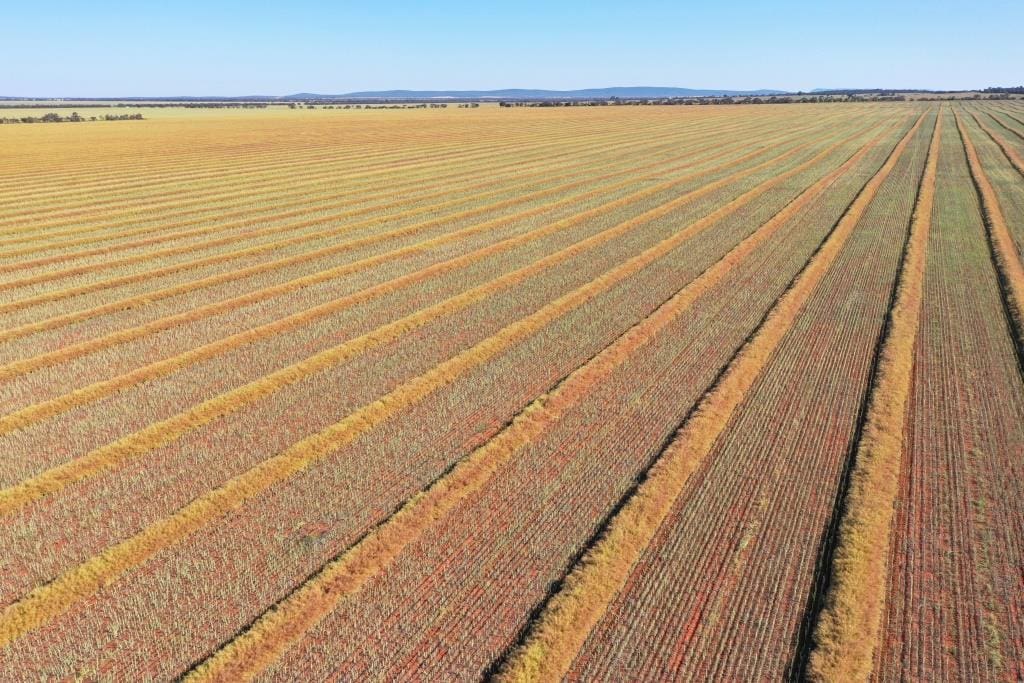
The Ballandry Portfolio includes ha of cropping country. Photo: CBRE
ONE of the northern Riverina’s largest aggregations, Ballandry Station, is being offered for sale by a pioneer in Australia’s large-scale poultry sector, David Bartter.
Covering 26,839ha, it is expected to sell for around $120 million, and offers the opportunity to acquire a sizeable foothold in recognised farming country in southern New South Wales.
Ballandry was previously listed in 2018 and again in 2021, and is this time with CBRE Agribusiness’s Boo Harvey and Matt Childs, who have said Mr Bartter is committed to the current campaign which will result in new stewardship for the property by mid-year.
“We have recently been approached with very good offers and see this new sale campaign as the last
offer of my lifetime of work of building the Ballandry Station aggregation of farms,” Mr Bartter said in a statement.
“A final sale decision will be made without delay so interested parties are encouraged to move quickly,” Mr Bartter said.
Ballandry is located 37km north and north-west of Griffith, and has an annual cropping program of 21,833ha across the three aggregations.
It is being offered with the 2023 winter crop now in the ground.
Ballandry’s size allows for farming efficiency and diversity, predominantly of wheat, canola, barley, lupins, field peas and vetch.
Improvements include 20,000 tonnes of grain and fertiliser storage as well as machinery sheds, workshops, plant and equipment, as well as 45,457 of delivery entitlements (DE); 150DEs are equivalent to a flow rate of 1 megalitre per day.
“This opportunity is truly once in a lifetime, a philosophy that Mr Bartter applied in building the aggregation of farms to what is presented today,” Ms Harvey said.
“Farm aggregations of this size meet head-on the worldwide concerns with food security.
“Mr Bartter hopes that an Australian consortium will acquire the farms and maintain Australia’s lead in worldwide food security.”
Bespoke management practices, including the application of chicken manure to improve soil quality,
have enhanced the red loam and red sandy loam soils.
“The region typically achieves average yields of 2.4-2.6t per hectare; however, we’ve seen these yields being well exceeded in recent years.”
The region benefits from a winter-dominant average annual rainfall of 424mm.
One of the aggregations has direct access to the Murrumbidgee Irrigation Northern Branch Canal and has approximately 3000ha that has been tested as suitable for almond production.
“There are many opportunities for diversity and strategic farm management.”
Source: CBRE
